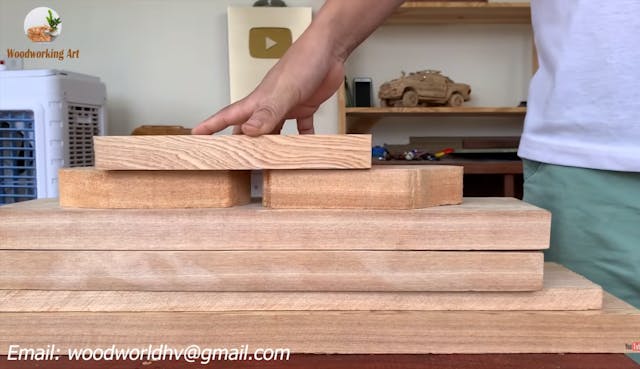Your moment of zen: Hand-carved 1967 Ford Mustang GT500
It’s Thursday, but even with the four-day week, it feels like Blursday. Take a short break from that impending doom deadline looming in the background, and check out how this 1967 Ford Mustang GT500 is born from simple blocks of lumber.
Of all the DIY creators on YouTube, the carpenters still strike me as the most clever. If you’ve ever had true-wood trim on a car, you know how fragile the material can be.
Many of us grew up with wood working projects foisted on us to build so-called “life skills.” For a summer during college, I worked with a carpenter (and racing buddy) to build a storage shed for a community garden, and the guy teaching me practiced Japanese woodworking techniques. While Western carpentry evolved to rely on hammers and nails, assisted by great, heavy machines in the shop like lathes and table saws, the Japanese style uses interlocking joints and square dowels for assembly. I remember a selection of chisels laid out like a spread of wrenches, each fit for different size cuts, and a few hand saws to take care of larger cuts. No power tools.

The carpenter in this clip is Vietnamese, and that country is rooted in a similar woodworking heritage. Those chisel-cut square-pin joints used to locate the sides and tops of this wooden Mustang made it all come back for me. Western woodworkers love their biscuit joints and dowels, but they typically require some kind of machinery to produce; Eastern carpentry focuses on working around the flat edges of a chisel. Sure, for this build the carpenter makes a few concessions to speed and convenience, using power tools like a scroll saw to rough-cut the side sheetmetal and a clamped-down drill to act as lathe for roughing out the tires, but every other detail is whittled one tap at a time.
Building a full-size car is little different. Every detail is meticulously sweated over, tweaked, and fitted to the next one. Many projects are a fusion of varying styles and techniques, leaving behind a unique trail of personal touches that makes our machines truly our own. Both are canvases for works of art, in their own ways.

